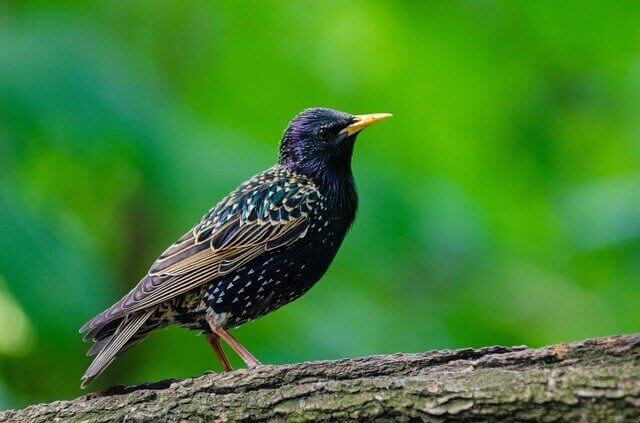Have you noticed a remarkable surge in the bird population in your backyard recently? You might be witnessing some of these feathered friends indulging in a diet of grass seeds, a vital food source for numerous avian species. In this article, we’ll take an in-depth look at 12 common birds that eat grass seeds.
Table of Contents
Why Are Birds Attracted To My Lawn?
Birds flock to lawns for various compelling reasons, making your backyard a thriving hub of avian activity.
- Food Source: Lawns often harbor a plethora of insects and invertebrates, which constitute a vital part of many bird species’ diets. Grasshoppers, earthworms, and other small creatures thrive in the grass and provide a ready food source for birds. Additionally, lawns may host grass seeds, making them an attractive spot for seed-eating birds like sparrows and finches.
- Water Availability: Birds need water not only for drinking but also for bathing and preening their feathers. If your lawn features a birdbath or a water source, it’s likely to attract a variety of birds.
- Cover and Nesting Sites: Well-manicured lawns with shrubs, bushes, and trees offer ideal nesting sites and cover for birds. They provide protection from predators and harsh weather conditions. Birds like robins and sparrows may find your lawn a suitable place to build their nests.
- Safety: Lawns that are free from pesticides and chemicals are safe for birds. Toxic substances can be harmful to them, so a chemical-free lawn is a welcoming environment.
- Proximity to Feeders: If you have bird feeders nearby, your lawn may become a natural extension of these feeding stations. Birds often forage for spilled seeds or fallen fruits beneath feeders.
- Migration Rest Stops: During migration, birds frequently seek out lawns as rest stops. They use these areas to rest and refuel on their long journeys, making a well-kept lawn a valuable oasis.
In summary, birds are attracted to your lawn because it offers a combination of food, water, safety, and shelter. By providing a welcoming habitat and taking steps to maintain your lawn with minimal use of chemicals, you can create a haven for a wide range of bird species.
How To Identify Bird Damage?
Identifying bird-induced damage to your lawn is essential for effective management. Look for these telltale signs:
- Patches of Uprooted Grass: Birds, especially larger species, may scratch the ground, creating bare patches and exposing soil.
- Scattered Seed Husks: If you’ve been feeding birds, you might notice discarded seed husks as evidence of their presence.
- Small Holes or Indentations: Some birds, like blackbirds or starlings, peck at the ground, leaving small holes or indentations.
- Uneven Growth Patterns: Birds feeding on grass seed may cause uneven growth in your lawn, making it appear patchy.
- Feather Accumulation: Molting feathers, especially during nesting seasons, can accumulate in your lawn.
- Bird Droppings: An obvious sign, bird droppings can stain your grass and indicate frequent bird visits.
Observing these signs helps you understand the extent of bird damage and take appropriate measures to protect your lawn.
Types of Birds That Eat Grass Seed
Sparrows

Sparrows are a small, brown bird that are omnivorous and eat a variety of things including bugs, seeds, fruit, and meat. Sparrows usually feed on the ground, but will sometimes eat insects or other small animals in the air.
They are particularly fond of the seeds of annual grasses, such as crabgrass and foxtail. Sparrows will also eat the seeds of some perennial grasses, such as bluegrass and fescue grass.
Finches
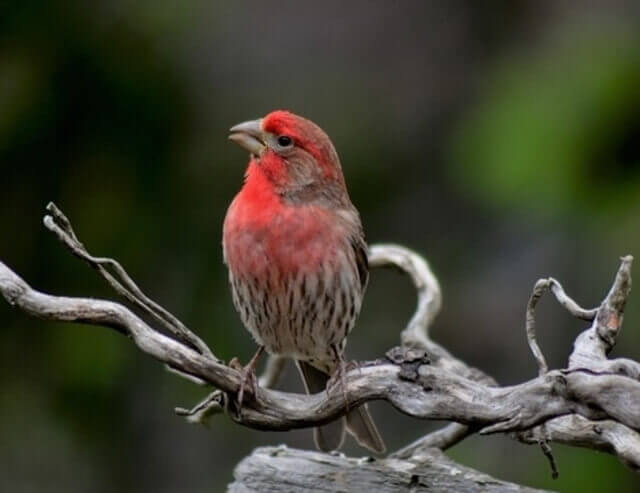
Finches are small, seed-eating birds. They are common in North America and can be found in a variety of habitats, from cities to suburban areas to rural areas. They are usually quick and nimble and can be difficult to spot. However, their unmistakable song is a good way to identify them.
Finches feed primarily on seeds, but they will also eat insects, fruit, and other small animals. These birds love to feed on seeds, and they particularly enjoy eating grass seed.
Buntings
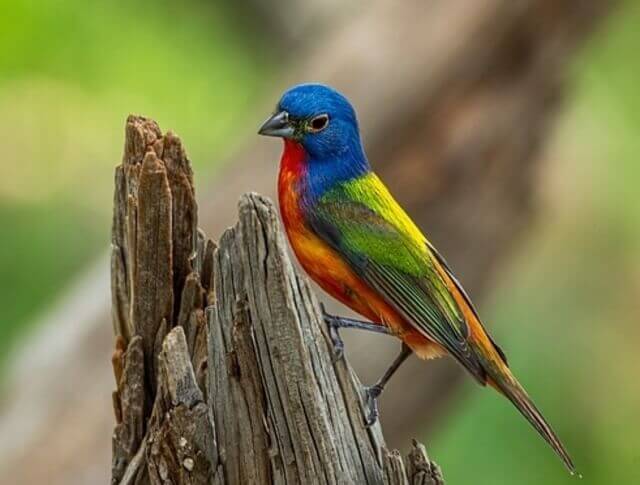
Buntings are a diverse group of small passerine birds that can be found in North America. They are generally small, but some species can reach a weight of over 20 grams.
Buntings have a wide range and can be found in a variety of habitats, from forests to deserts. They feed on insects, spiders, and other small creatures, and some species are known to consume grass seed.
Pigeons

Pigeons are omnivorous birds that can be found in many habitats across the world. In North America, they are typically found in urban areas or near human settlements.
They are a common sight in parks and other open spaces. The diet of pigeons varies depending on where they are found, but they usually eat things like seeds such as grass seeds, grains, and insects.
Parakeets
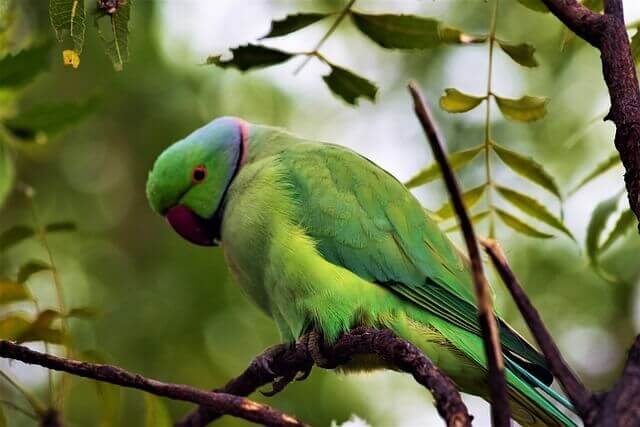
Wild parakeets live in the rainforests of South America, Central America and some parts of the Caribbean, and can be found in a variety of habitats, including rainforests, humid forests, and savannas.
Wild parakeets eat a variety of foods, including seeds, nuts, fruit, insects and other small animals. Occasionally they will eat grass seed, but this is not their primary food source.
Blackbirds
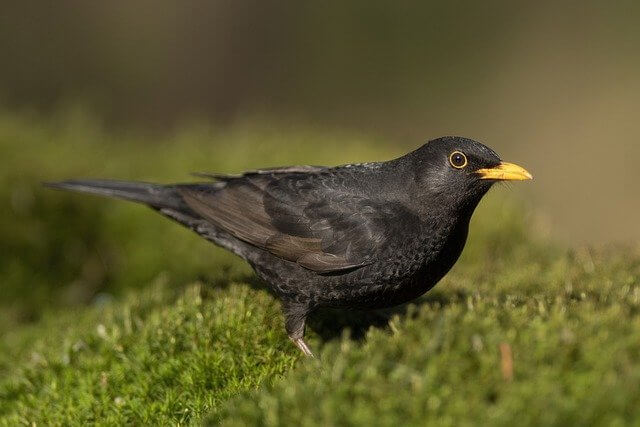
Common Blackbirds range across the United States, from the Arctic tundra to the deep south. They are common in suburban and urban areas, but can be found in a wide variety of habitats including rural areas, forests, and parks.
The blackbird is an opportunistic feeder and will eat a variety of items including insects, seeds, worms, and small mammals.
Starlings
Starlings are a common bird found throughout North America. They prefer to live in suburban and rural areas, as well as in cities. The starlings range spans from Canada to Guatemala, and they can be found in a variety of habitats including open fields, forests, wetlands, and parks.
The starlings diet consists of insects, small birds, and scraps. While in some parts of their range they will eat grass seeds, in others they will consume larger items.
Doves

Doves are a common bird in many parts of the world. They are known for their soft plumage and intricate cooing sound. In the United States, doves are found in most states except Hawaii and Alaska. These birds can live in many habitats, but they usually live near water. They eat a variety of things, but they mostly eat seeds.
Doves shy away from consuming the bulk of “lawn-type” grass seeds. They have no desire for these little seeds, which are too small. If you are going to seed a lawn, you need to have a minimal concern about doves consuming the seed. They are more into giant foxtail, which is a species of Chinese brittle grass.
Cardinals
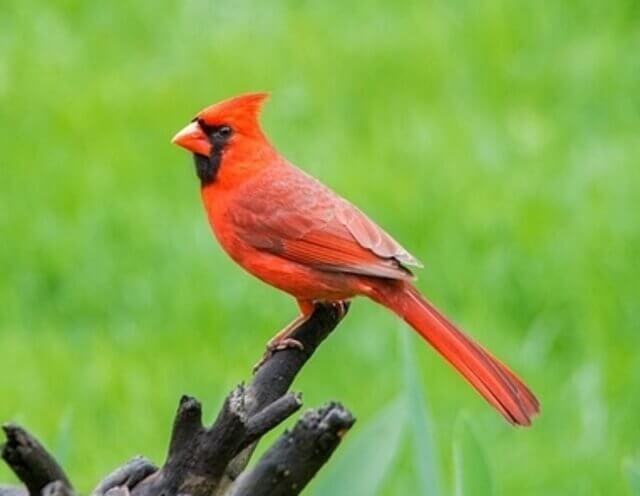
Cardinals, belonging to the Cardinalidae family, are small birds native to North America. Their range spans from the United States through Canada and into parts of Central America.
These vibrant birds primarily inhabit woodlands, where their diet consists of insects, spiders, and various small creatures. On occasion, Cardinals may include grass seeds in their menu.
Meadowlarks
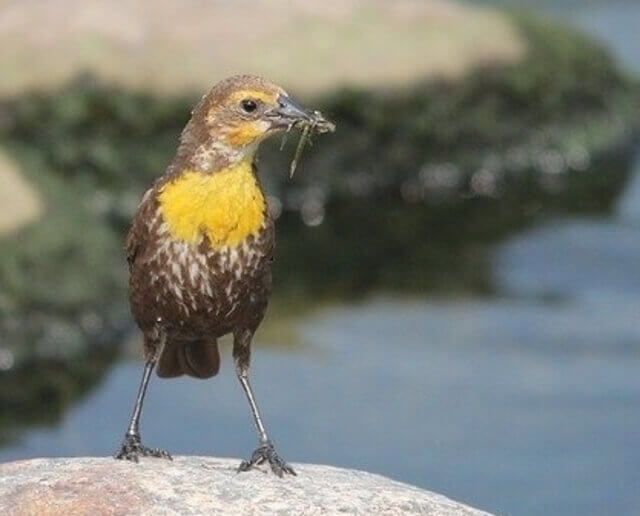
The Meadowlark is a small songbird that lives in North America. It has a range that includes most of Canada and the United States, and it is found in many kinds of ecosystems.
The Western meadowlark is a small bird that lives in open areas near meadows and other grassy areas. This songbird feeds on grass seeds and insects.
Goldfinch
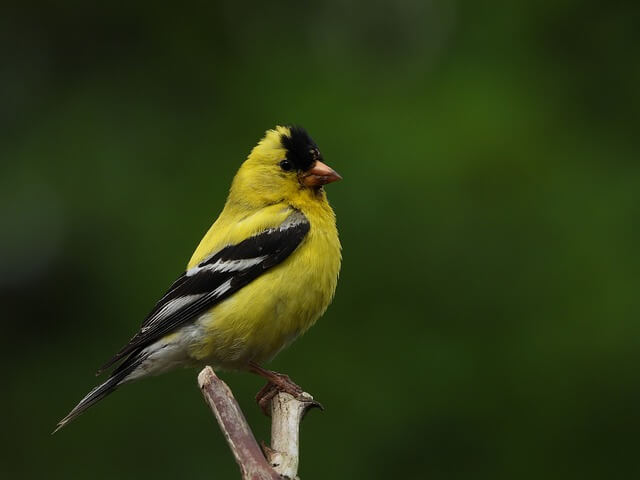
Goldfinches, a diminutive avian species, inhabit diverse regions worldwide. Their range spans North America, Europe, Asia, and parts of South America.
Goldfinches thrive in deciduous and mixed forests characterized by dense vegetation and towering trees. While they consume an array of seeds, their penchant for grass seeds stands out.
Cowbirds

The Brown-headed cowbird, a small avian species, inhabits a vast range across the United States. Typically, they thrive in open environments, including farmlands, grasslands, and suburban areas.
These birds possess an omnivorous diet, consuming insects, seeds, and various small creatures. On rare occasions, they may include grass seeds in their eclectic menu.
How To Keep Birds From Eating Your Grass Seeds?
Preventing birds from devouring your grass seeds is crucial for a healthy lawn. Here are some effective strategies:
- Use Netting: Cover your freshly sown seeds with bird netting or garden fabric. Ensure the netting is securely anchored to prevent birds from reaching the seeds.
- Scare Tactics: Implement visual deterrents like reflective tape, aluminum foil strips, or old CDs hanging around your lawn. The reflective surfaces create movements and flashes that startle birds.
- Ultrasonic Devices: Install ultrasonic bird repellent devices that emit high-pitched sounds that are annoying to birds but inaudible to humans. Place them strategically around your lawn.
- Bird Feeders: Set up bird feeders away from your lawn to provide birds with an alternative food source. Regularly fill them with birdseed or other bird-friendly foods.
- Predator Decoys: Place decoys like plastic owls, hawks, or even fake snakes. Move them around periodically to prevent birds from getting used to their presence.
- Sprays and Repellents: Apply bird repellent sprays or granules to your lawn. These products usually have a taste or scent that birds find unpleasant. Reapply as needed.
- Companion Planting: Plant tall grasses or shrubs nearby to create a natural barrier around your lawn. These plants offer shelter and make it harder for birds to access the seeds.
- Timing: Sow grass seeds when bird activity is typically lower, like late winter or early spring. Birds are more active during the warmer months when insects are abundant.
- Regular Maintenance: Keep your lawn short and well-maintained. Birds prefer tall grasses to hide and forage, so regular mowing can make your lawn less appealing.
- Professional Advice: Consult with a professional pest control service or local agriculture extension office for tailored guidance on bird control methods.
- Strategic Planting: Select grass seed varieties that are known to be less attractive to birds. Your local nursery or agricultural extension service can advise on bird-resistant varieties.
- Watering Schedule: Adjust your watering schedule to keep the soil less appealing for foraging. Birds often prefer drier soil, so watering in the morning can deter them.
- Motion-Activated Sprinklers: Install motion-activated sprinklers around your lawn. These sprinklers activate when they detect movement and can effectively startle birds.
- Taste Aversion Sprays: Apply sprays with unpleasant tastes to the grass seeds. These products can deter birds from pecking at the seeds and damaging your lawn.
- Local Bird Feeders: Encourage local birdwatchers and neighbors to place bird feeders elsewhere, diverting bird activity away from your lawn. Collaboration with your community can be an effective approach.
By combining these detailed strategies, you can protect your grass seeds and maintain a lush, bird-free lawn.
Frequently Asked Questions
Is there anything you can spray to keep birds away?
Yes, there are bird repellent sprays available. These sprays often contain ingredients that produce tastes or odors that are unpleasant for birds. It’s important to use bird-safe repellents that won’t harm your plants or the environment.
Will birds eat lawn seeds?
Yes, birds are known to eat lawn seeds. Various species of birds, including sparrows and finches, find grass seeds to be a valuable food source, especially in open lawn areas.
How do you protect grass seeds from birds?
To protect grass seeds from birds, you can employ multiple strategies. Bird netting or mesh can create a physical barrier that prevents birds from accessing the seeds while still allowing sunlight and water penetration. Using row covers or seed tapes can also deter bird access.
Is coated grass seed a better solution?
Coated grass seeds can offer some level of protection against birds. The coating typically includes substances that make the seeds unappealing to birds. While this can be a helpful preventive measure, for comprehensive protection, it’s advisable to combine coated seeds with other bird deterrent methods, especially if you have a persistent bird problem.
What is the best deterrent for birds?
The best bird deterrent strategy often combines several methods. Visual deterrents, like scare tape, predator decoys, or reflective objects, can effectively discourage birds. Adding audible deterrents, such as sonic devices that emit distress calls of birds or other animal sounds, can provide an extra layer of deterrence.


